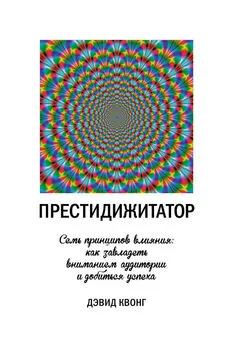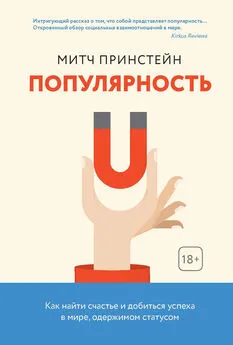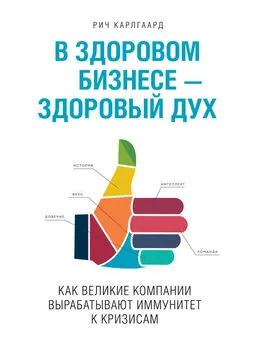Рич Карлгаард - Поздний расцвет [Как взрослым добиться успеха в мире, одержимом ранним развитием] [litres]
- Название:Поздний расцвет [Как взрослым добиться успеха в мире, одержимом ранним развитием] [litres]
- Автор:
- Жанр:
- Издательство:Литагент 5 редакция «БОМБОРА»
- Год:2020
- Город:Москва
- ISBN:978-5-04-102266-2
- Рейтинг:
- Избранное:Добавить в избранное
-
Отзывы:
-
Ваша оценка:
Рич Карлгаард - Поздний расцвет [Как взрослым добиться успеха в мире, одержимом ранним развитием] [litres] краткое содержание
Поздний расцвет [Как взрослым добиться успеха в мире, одержимом ранним развитием] [litres] - читать онлайн бесплатно ознакомительный отрывок
Интервал:
Закладка:
8… пропасть между бедными и богатыми достигла максимального показателя … – Rakesh Kochhar and Anthony Cilluffo, “How Wealth Inequality Has Changed in the U.S. Since the Great Recession, by Race, Ethnicity and Income,” Pew Research Center, November 1, 2017, https://pewrsr.ch/2NXW6IS.
9… «давление со стороны общественности заставляет нас…» – Шилаг Миргейн цитируется в “Dealing with Peer Pressure When You’re an Adult,” UW Health, September 21, 2015, http://bit.ly/2OnPfpq.
10… «объединение людей на самом высоком уровне культурной идентичности» – Samuel P. Huntington, “The Clash of Civilizations?” Foreign Affairs 72, no. 3 (Summer 1993): 22–49.
11… американцы почти одиннадцать часов в день проводят … – John Koblin, “How Much Do We Love TV? Let Us Count the Ways,” New York Times, June 30, 2016.
12. В Америке школьники тратят … – опять же, это очень трудно посчитать. На самом деле, сколько мы смотрим телевизор или тратим время на другие цифровые технологии, зависит от того, как мы приобретаем новые привычки и устройства. Про телевизор достаточно сказать, что мы смотрим его очень много.
13… «они укрепляют существующие ценности и убеждения и также служат источником норм и принципов» … – Joan E. Grusec and Paul David Hastings, eds., Handbook of Socialization: Theory and Research (New York: Guilford, 2014).
14. Из средств массовой информации мы извлекаем… – существует немало литературы о силе и влиянии средств массовой информации. Вот только несколько примеров: Craig A. Anderson et al., “The Influence of Media Violence on Youth,” Psychological Science in the Public Interest 4, no. 3 (2003): 81–110; L. Rowell Huesmann, “Psychological Processes Promoting the Relation Between Exposure to Media Violence and Aggressive Behavior by the Viewer,” Journal of Social Issues 42, no. 3 (1986): 125–39; Albert Bandura, “Social Cognitive Theory of Mass Communication,” in Media Effects: Advances in Theory and Research, ed. Jennings Bryant and Mary Beth Oliver, 3rd ed. (New York: Routledge, 2009); Cynthia-Lou Coleman, “The Influence of Mass Media and Interpersonal Communication on Societal and Personal Risk Judgments,” Communication Research 20, no. 4 (1993): 611–28; Kristen E. Van Vonderen and William Kinnally, “Media Effects on Body Image: Examining Media Exposure in the Broader Context of Internal and Other Social Factors,” American Communication Journal 14, no. 2 (2012): 41–57; Rebecca Coleman, “The Becoming of Bodies: Girls, Media Effects, and Body Image,” Feminist Media Studies 8, no. 2 (2008): 163–79; Shelly Grabe, L. Monique Ward, and Janet Shibley Hyde, “The Role of the Media in Body Image Concerns Among Women: A Meta-Analysis of Experimental and Correlational Studies,” Psychological Bulletin 134, no. 3 (2008): 460; Patti M. Valkenburg, Jochen Peter, and Joseph B. Walther, “Media Effects: Teory and Research,” Annual Review of Psychology 67 (2016): 315–38; Christopher P. Barlett, Christopher L. Vowels, and Donald A. Saucier, “Meta-Analyses of the Effects of Media Images on Men’s Body-Image Concerns,” Journal of Social and Clinical Psychology 27, no. 3 (2008): 279–310; Brad J. Bushman and L. Rowell Huesmann, “Short-Term and Long-Term Effects of Violent Media on Aggression in Children and Adults,” Archives of Pediatrics and Adolescent Medicine 160, no. 4 (2006): 348–52; and Yuko Yamamiya et al., “Women’s Exposure to Tin-and-Beautiful Media Images: Body Image Effects of Media-Ideal Internalization and Impact-Reduction Interventions,” Body Image 2, no. 1 (2005): 74–80.
15. Ученые называют это явление «культивированием» … – James Shanahan and Michael Morgan, Television and Its Viewers: Cultivation Theory and Research (New York: Cambridge University Press, 1999); W. James Potter, “Cultivation Theory and Research: A Conceptual Critique,” Human Communication Research 19, no. 4 (1993): 564–601; W. James Potter, “A Critical Analysis of Cultivation Theory,” Journal of Communication 64, no. 6 (2014): 1015–36; Michael Morgan, James Shanahan, and Nancy Signorielli, “Growing Up with Television: Cultivation Processes,” Media Effects: Advances in Theory and Research 3 (2009): 34–49.
16. В обществе действуют негласные правила … – Rachel I. McDonald and Christian S. Crandall, “Social Norms and Social Influence,” Current Opinion in Behavioral Sciences 3 (2015): 147–51; Robert B. Cialdini, Carl A. Kallgren, and Raymond R. Reno, “A Focus Theory of Normative Conduct: A Theoretical Refinement and Reevaluation of the Role of Norms in Human Behavior,” in Advances in Experimental Social Psychology, ed. Mark P. Zanna, vol. 24 (San Diego, CA: Academic Press, 1991); Carl A. Kallgren, Raymond R. Reno, and Robert B. Cialdini, “A Focus Teory of Normative Conduct: When Norms Do and Do Not Affect Behavior,” Personality and Social Psychology Bulletin 26, no. 8 (2000): 1002–12; Maria Knight Lapinski and Rajiv N. Rimal, “An Explication of Social Norms,” Communication Theory 15, no. 2 (2005): 127–47; Ernst Fehr and Urs Fischbacher, “Social Norms and Human Cooperation,” Trends in Cognitive Sciences 8, no. 4 (2004): 185–90; Robert B. Cialdini and Melanie R. Trost, “Social Influence: Social Norms, Conformity and Compliance,” in The Handbook of Social Psychology, ed. D. T. Gilbert, S. T. Fiske, and G. Lindzey, vol. 2 (New York: McGraw-Hill, 1998).
17. Представьте, что вас попросили … – Solomon E. Asch and H. Guetzkow, “Effects of Group Pressure upon the Modification and Distortion of Judgments,” in Groups, Leadership, and Men: Research in Human Relations, ed. Harold Steere Guetzkow (Pittsburgh: Carnegie Press, 1951); Solomon E. Asch, “Group Forces in the Modification and Distortion of Judgments,” Social Psychology 10 (1952): 450–501.
18. Другие ученые повторили этот эксперимент … – Rod Bond and Peter B. Smith, “Culture and Conformity: A Meta-Analysis of Studies Using Asch’s (1952b, 1956) Line Judgment Task,” Psychological Bulletin 119, no. 1 (1996): 111–37. Здесь следует оговориться: многие ученые не смогли воспроизвести результаты Аша, и поэтому некоторые предположили, что «эффект Аша» был результатом конформизма 1950-х годов.
19… люди не понимают, почему они с такой готовностью присоединяются к большинству – Jessica M. Nolan et al., “Normative Social Influence Is Underdetected,” Personality and Social Psychology Bulletin 34, no. 7 (2008): 913–23; Wesley P. Schultz, Azar M. Khazian, and Adam C. Zaleski, “Using Normative Social Influence to Promote Conservation Among Hotel Guests,” Social Influence 3, no. 1 (2008): 4–23; Rishee K. Jain et al., “Can Social Influence Drive Energy Savings? Detecting the Impact of Social Influence on the Energy Consumption Behavior of Networked Users Exposed to Normative Eco-Feedback,” Energy and Buildings 66 (2013): 119–27.
20. « Учитывая повсеместность и силу нормативного социального влияния…» – Robert Cialdini цитируется в Nolan et al., “Normative Social Influence Is Underdetected.”
21. Нормативное мышление ведет к убеждению, что правильный путь… – Todd Rose, The End of Average: How We Succeed in a World Tat Values Sameness (New York: HarperCollins, 2015).
22. …«назовите это кланом, коллективом …» – Jane Howard, Margaret Mead: A Life (New York: Ballantine Books, 1989).
23. Они изучили психологический эффект отклонения от нормы … – Gregory S. Berns et al., “Neurobiological Correlates of Social Conformity and Independence During Mental Rotation,” Biological Psychiatry 58, no. 3 (2005): 245–53. См. также Mirre Stallen, Ale Smidts, and Alan Sanfey, “Peer Influence: Neural Mechanisms Underlying In-Group Conformity,” Frontiers in Human Neuroscience 7 (2013): 50; Mirre Stallen and Alan G. Sanfey, “The Neuroscience of Social Conformity: Implications for Fundamental and Applied Research,” Frontiers in Neuroscience 9 (2015): 337; Juan F. Domínguez D, Sreyneth A. Taing, and Pascal Molenberghs, “Why Do Some Find It Hard to Disagree? An fMRI Study,” Frontiers in Human Neuroscience 9 (2016): 718.
1. Несметное количество книг превозносит … – Charles Duhigg, The Power of Habit: Why We Do What We Do in Life and Business (New York: Random House, 2013); Jocko Willink and Leif Babin, Discipline Equals Freedom (New York: St. Martin’s Press, 2017); Kelly McGonigal, The Willpower Instinct: How Self-Control Works, Why It Matters, and What You Can Do to Get More of It (New York: Penguin, 2011); William H. McRaven, Make Your Bed: Little Tings Tat Can Change Your Life. . and Maybe the World (New York: Grand Central Publishing, 2017); Jordan B. Peterson, 12 Rules for Life: An Antidote to Chaos (Toronto: Random House Canada, 2018).
2. «Мне еще не было семнадцати…» – Дэниел Браун, интервью Susan Salter Reynolds, добровольно собиравшей материал для «Поздних цветов», в 2015 году.
3… «демонстрировали заметный интерес к шоколаду…» – Hans Villarica, “The Chocolate-and-Radish Experiment Tat Birthed the Modern Conception of Willpower,” Atlantic, April 9, 2012. See also R. F. Baumeister et al., “Ego Depletion: Is the Active Self a Limited Resource?” Journal of Personality and Social Psychology 74, no. 5 (1998): 1252–65; R. F. Baumeister et al., “The Strength Model of Self-Control,” Current Directions in Psychological Science 16 (2007): 351–55; M. Muraven and R. F. Baumeister, “Self-Regulation and Depletion of Limited Resources: Does Self-Control Resemble a Muscle?” Psychological Bulletin 126, no. 2 (2000): 247–59; D. Tice et al., “Restoring the Self: Positive Affect Helps Improve Self-Regulation Following Ego Depletion,” Journal of Experimental Social Psychology 43, no. 3 (2007): 379–84.
4. Всадник (эго) обычно отвечает за управление… – Sigmund Freud, The Ego and the Id: Standard Edition, ed. James Strachey (1923; New York: W. W. Norton, 1960).
5. На протяжении всей карьеры он подготовил 31 олимпийского чемпиона … – Kenny Moore, Bowerman and the Men of Oregon: The Story of Oregon’s Legendary Coach and Nike’s Cofounder (Emmaus, PA: Rodale, 2006).
Читать дальшеИнтервал:
Закладка:
![Обложка книги Рич Карлгаард - Поздний расцвет [Как взрослым добиться успеха в мире, одержимом ранним развитием] [litres]](/books/1070509/rich-karlgaard-pozdnij-rascvet-kak-vzroslym-dobit.webp)






![Жанна Сио-Фашен - Сверходаренный ребенок [Как понять его и помочь добиться успеха] [litres]](/books/1066227/zhanna-sio.webp)


![Брэд Сталберг - Гори, но не сгорай. Как пойти ва-банк, добиться успеха и наслаждаться жизнью без баланса [litres]](/books/1147482/bred-stalberg-gori-no-ne-sgoraj-kak-pojti-va.webp)